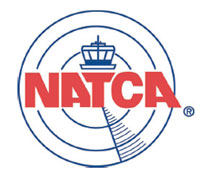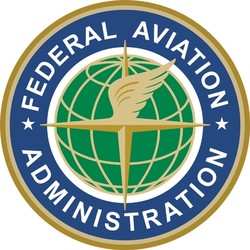Reinforces FAA Policy Against Sleeping On Duty
The FAA and NATCA today announced agreement on important fatigue
recommendations that were developed by a joint FAA-NATCA working
group which was established under the 2009 collective bargaining
agreement. “The American public must have confidence that our
nation’s air traffic controllers are rested and ready to
work,” said Transportation Secretary Ray LaHood. “We
have the safest air transportation system in the world but we
needed to make changes and we are doing that.”

The agreement reinforces existing FAA policy that prohibits air
traffic controllers from sleeping while they are performing
assigned duties. The FAA will continue to provide air traffic
controllers breaks on the midnight shift based on staffing and
workload. While on break, air traffic controllers are expected to
conduct themselves professionally and be available for recall at
all times.
The FAA and NATCA also agreed that all air traffic controllers
must report for work well-rested and mentally alert. It is the
employee’s responsibility to notify their supervisor if they
are too fatigued to perform their air traffic control duties. As a
result of this agreement, air traffic controllers can now request
to take leave if they are too fatigued to work air traffic.
This agreement marks the completion of the tasks required by
this joint FAA-NATCA fatigue working group. The FAA and NATCA will
continue to collaborate to reduce the risk of fatigue in the
workplace. “Air traffic controllers have the responsibility
to report rested and ready to work so they can safely perform their
operational duties,” said FAA Administrator Randy Babbitt.
“But we also need to make sure we have the right policies in
place to reduce the possibility of fatigue in the
workplace.”
“We are pleased that the efforts of the joint NATCA-FAA
fatigue workgroup that produced these science-based recommendations
have resulted in an agreement and their implementation into the
schedules and work environments of our nation's dedicated and
highly professional air traffic controller workforce,” said
NATCA President Paul Rinaldi. "We supported the FAA's action to
enhance aviation safety by eliminating single staffing on the
midnight shift and we fully support these recommendations that
address fatigue. They are common sense solutions to a safety
problem that NATCA and fatigue experts have consistently raised for
many years."

Air traffic controllers will also now be allowed to listen to
the radio and read appropriate printed material while on duty
during the hours of 10PM and 6AM as traffic permits. The FAA had
previously adjusted work schedules to give air traffic controllers
a minimum of nine hours off between shifts. The FAA and NATCA will
develop new watch schedule principles that incorporate fatigue
science for schedules beginning no later than September 1, 2012.
The FAA and NATCA are already beginning to work with local
facilities on watch schedules that reduce the possibility of
fatigue in the transition from the day shift to the midnight
shift.
The FAA has also agreed to develop policies that will encourage
air traffic controllers to seek medical help for sleep apnea.
Currently, air traffic controllers lose their medical qualification
if they are diagnosed with sleep apnea. The FAA will work to
develop a process for most air traffic controllers with sleep apnea
to regain their medical qualification once they receive proper
medical treatment. The FAA’s Office of Aerospace Medicine
will also develop educational material to raise awareness of the
symptoms and the physical effects of sleep apnea.
As a result of this agreement, the FAA will develop a Fatigue
Risk Management System for air traffic operations by January of
next year. This management system will be designed to collect and
analyze data associated with work schedules, including work
intensity, to ensure that the schedules are not increasing the
possibility of fatigue. Systems like these are commonly used in
other areas of aviation to evaluate levels of risk.
The FAA is also designing a comprehensive fatigue awareness and
education training program for employees.
 Aero-News: Quote of the Day (04.28.25)
Aero-News: Quote of the Day (04.28.25) ANN's Daily Aero-Term (04.28.25): Decision Altitude (DA)
ANN's Daily Aero-Term (04.28.25): Decision Altitude (DA) ANN's Daily Aero-Linx (04.28.25)
ANN's Daily Aero-Linx (04.28.25) Airborne-Flight Training 04.24.25: GA Refocused, Seminole/Epic, WestJet v TFWP
Airborne-Flight Training 04.24.25: GA Refocused, Seminole/Epic, WestJet v TFWP Aero-News: Quote of the Day (04.29.25)
Aero-News: Quote of the Day (04.29.25)




